College of En gineering
BRAG BOOK
Carnegie Mellon Engineers
3
The engineers you read about in this book encountered a need to change something in the world around them.
4
They saw the possibility of what could be different—better. And they had the audacity to believe they could change the world, and they did.
CMU engineers continue to tackle problems that are best solved through interdisciplinary cooperation.
They take on challenges that demand ingenuity and a range of expertise.
These bold collaborators have the power to change the world, and they will.
At the Carnegie Mellon University College of Engineering, we seek challenges, work together, believe in possibilities, and make the world better!
5
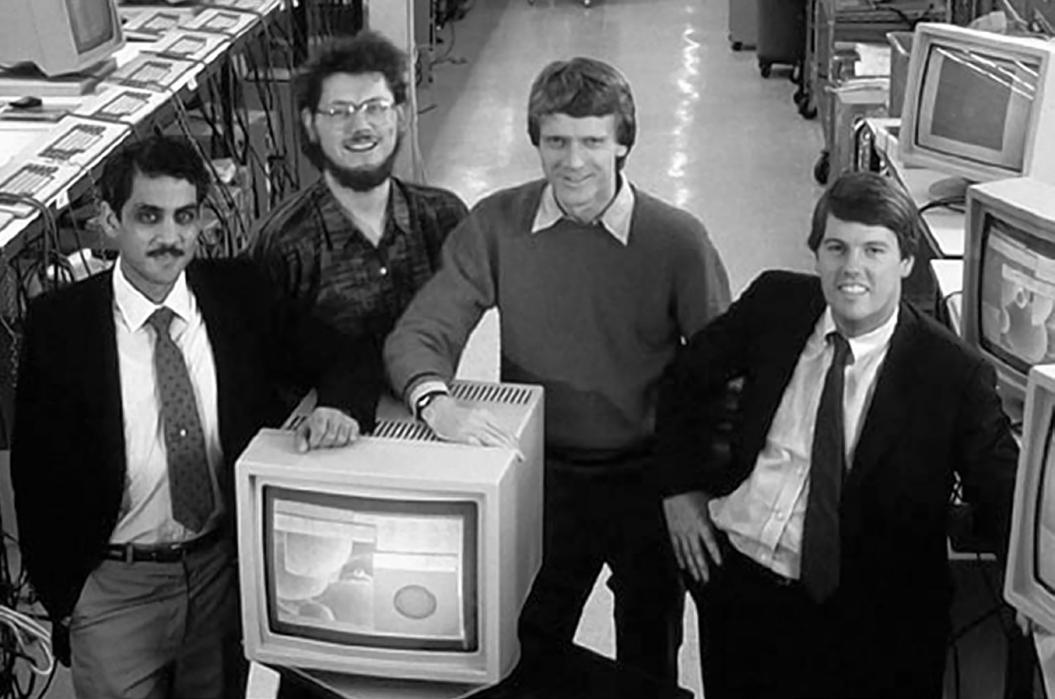
Let the Sun Shine
In 1982 Vinod Khosla (MS BME ’78) and Andy Bechtolsheim (MS ECE ’76 ) received funding from venture capitalists to start Sun Microsystems, the American technology company that sold computers, computer components, software, and information technology services and created the Java programming language. The trailblazing company had its initial public offering in 1986 and reached $1 billion in sales by 1988.
Bechtolsheim, who is seen as one of the most successful “angel investors,” was one of the first to invest in Google, providing $100,000 funding in September 1998. Khosla is a self-proclaimed “entrepreneurship zealot and grounded technology possibilist” who is also considered one of the most successful and influential venture capitalists.
7
Pictured from left: Vinod Khosla, Bill Joy, Andy Bechtolsheim, and Scott McNealy
Berserk Biotech
It has been said that Jonathan Rothberg (BS BME & CHEME ’85), who invented and commercialized high-speed DNA sequencing, generates new ideas at a berserk pace. He has founded multiple life science and medical device companies and received the National Medal of Technology and Innovation, the nation’s highest honor for technological achievement, from President Barack Obama.
The university trustee published the first complete genome of a single individual, developed a compact DNA sequencing machine, created a handheld ultrasound system used aboard SpaceX flights, and developed a low-cost, rapid home test for COVID-19 from the lab onboard his private yacht, Gene Machine.
8

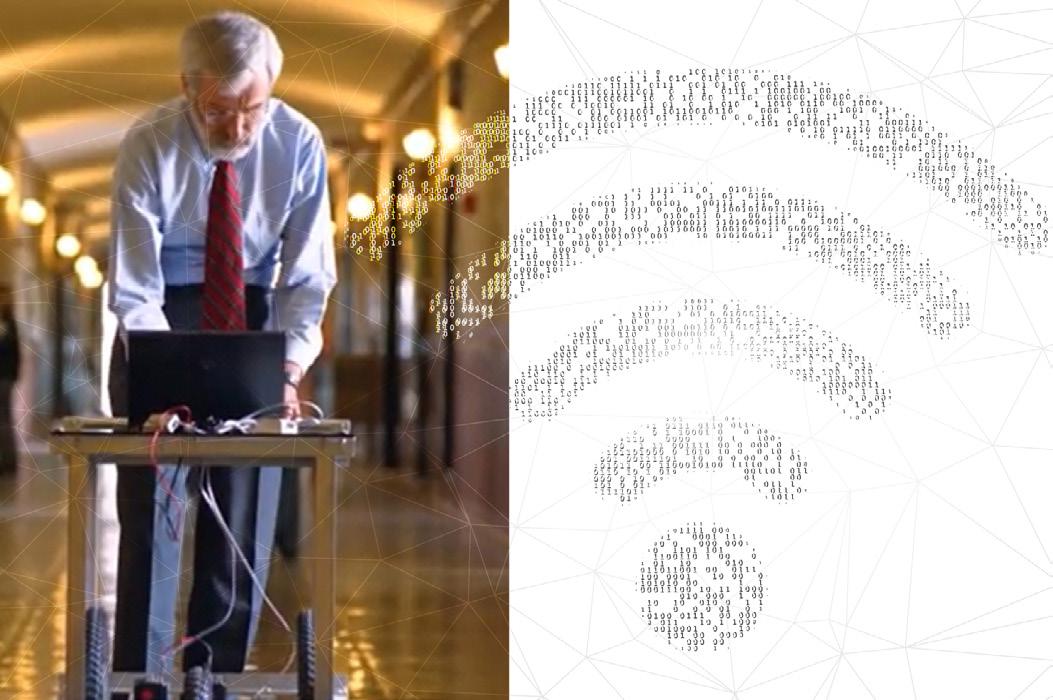
10
How to Build a Wi-Fi Network
In 1994, Alex Hills (PhD EPP ’79) led the team that developed “Wireless Andrew,” the first campus-wide wireless Internet network while serving as the first director of the Information Networking Institute (INI). The Distinguished Service Professor of Engineering & Public Policy had acquired a unique skill set that helped him wrangle the unpredictable behavior of radio waves. As a teenager he was an avid amateur radio operator and as a young engineer he helped bring radio, TV, and telephone service to remote villages in Alaska.
He failed to predict that the tech-savvy students at Carnegie Mellon would not only discover the developing network’s existence and understand its value, but they would also quickly find ways to hack into the system that was intended for the exclusive use of faculty researchers.
11
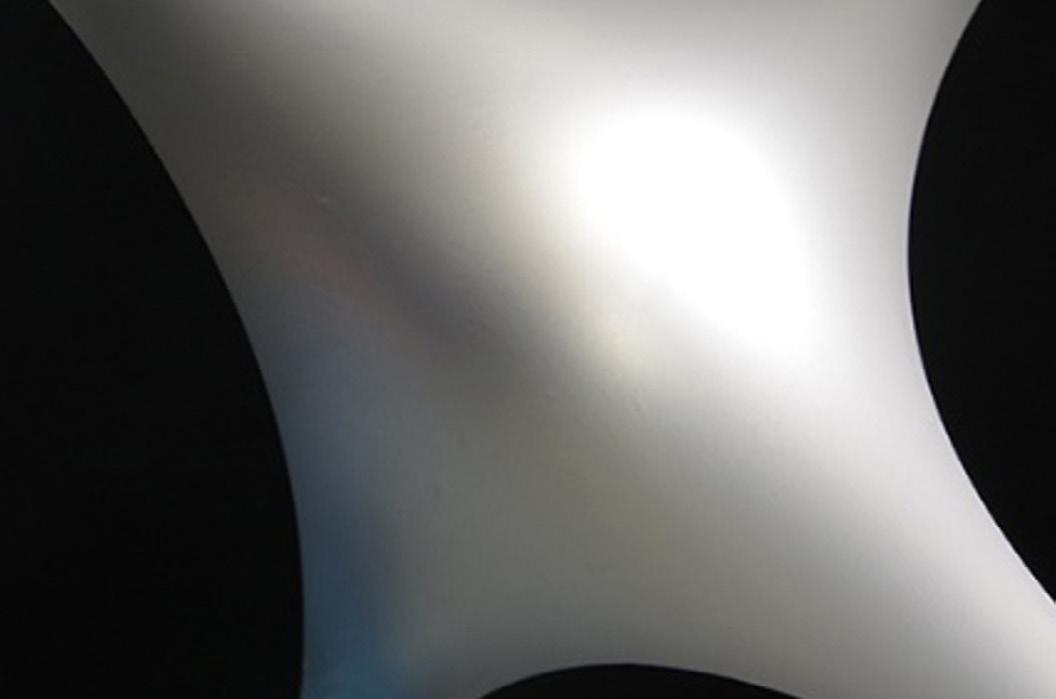
Soft as Skin, Cold as Steel

Mechanical Engineering Professor Carmel Majidi developed a soft material that will allow robotic technology to comfortably integrate with everyday human functioning. The composite, nicknamed Thubber, features a unique trio of mechanical, electrical, and thermal properties that will help advance the emerging field of softbotics.
Thubber has high thermal conductivity that makes it cold to the touch. This allows for thermal management in soft material systems needed for creating safe, comfortable, functional robotic devices.
13
Artificial Intelligence Innovators and Educators
Artificial intelligence is rapidly changing the world, with applications in fields ranging from autonomous vehicles, cybersecurity, medicine, industrial robots, and smart devices. Carnegie Mellon has led the world in artificial intelligence education and innovation since Herbert Simon and Allen Newell pioneered the field in the 1950s.
Today, faculty throughout the College of Engineering are applying artificial intelligence and machine learning to advance engineering research. And students here are some of the first to be able to earn degrees in this burgeoning and critical field, that combined with engineering, will help to ensure the intellectual and economic vitality of our community, nation, and world.
14

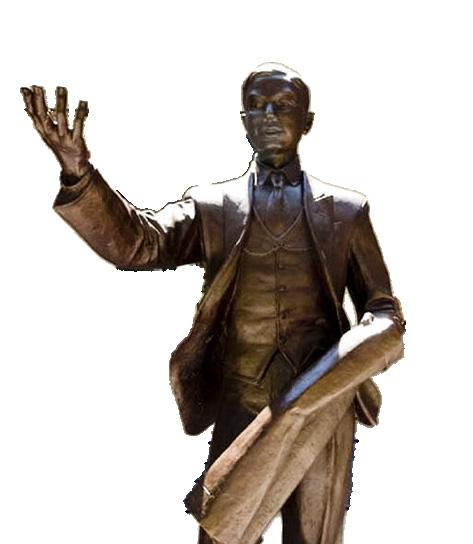
Between Baker and Porter Halls on the CMU campus is a statue of Mao Yisheng (PhD CEE 1919), the civil engineering graduate and first student to earn a Ph.D. at Carnegie Mellon. He was a revered and innovative engineering educator who served as president of four major Chinese universities.
In 1937, shortly after having served as lead engineer for the construction of the Qiantang River Bridge in China, he was ordered to blow up the bridge to delay the advancing Imperial Japanese Army. He went on to rebuild the Qiantang River Bridge, design the Wuhan Yangtze River Bridge, and create the structural design of the Great Hall of the People in Beijing.

17
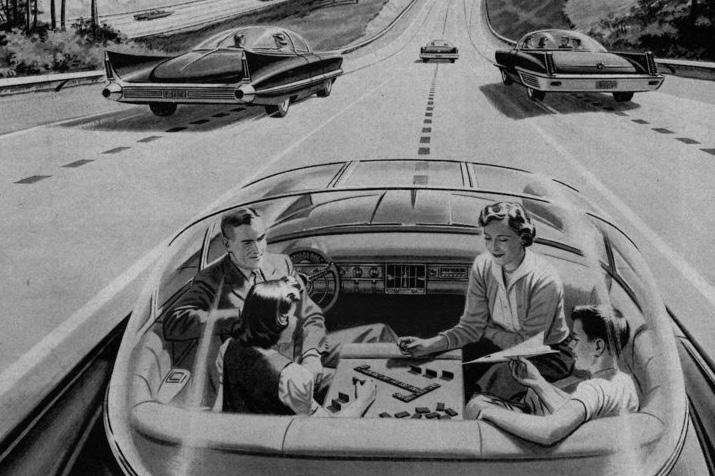
Driving into the Future
Carnegie Mellon University is the birthplace of autonomous driving technology, and Raj Rajkumar is turning the once incredible idea of driverless cars into the exciting and environmentally sensible reality of autonomous vehicles.
Rajkumar is the George Westinghouse Professor of Electrical and Computer Engineering and serves as director of the Metro21: Smart Cities Institute and two U.S. Department of Transportation centers. His wide-ranging research has established his reputation as a leading expert and prolific contributor in the field of self-driving cars.
19
Engineering Her Way to the Top
As an undergraduate at CMU, Candace Matthews (BS MSE ’81) learned powerful critical thinking, problem-solving, and analytical skills that she applied to leadership roles at The Coca-Cola Company, Procter & Gamble, General Mills, and as Regional President of the Americas at Amway.
She was the youngest of 18 children and the granddaughter of a Georgia man who was lynched in 1915 for refusing to sell property he rightfully owned. She credits her mother’s innate ability to nurture, as well as her mother’s favorite mantra that “where there is a will there’s a way” for her rise from humble beginnings to the C-suite of some of America’s top corporations.
20
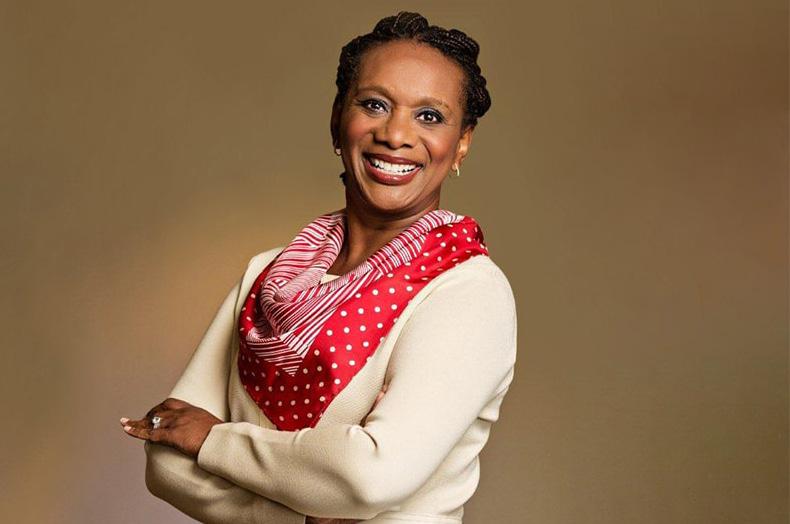

Transforming the African Continent
Established in 2011, CMU-Africa is the only U.S. research university with full-time faculty, staff, and operations in Africa. The Kigali, Rwanda location offers master’s degrees through Carnegie Mellon’s top-ranked College of Engineering. Born out of a partnership between Carnegie Mellon University and the Government of Rwanda, CMU-Africa is addressing the critical shortage of high-quality engineering talent required to accelerate the economic transformation of the continent.
In 2022, Carnegie Mellon University announced a transformational $275.7 million partnership with the Mastercard Foundation to significantly expand advanced engineering and technology education at CMU-Africa. The investment will also strengthen Africa’s research, entrepreneurship, and innovation ecosystem.
23
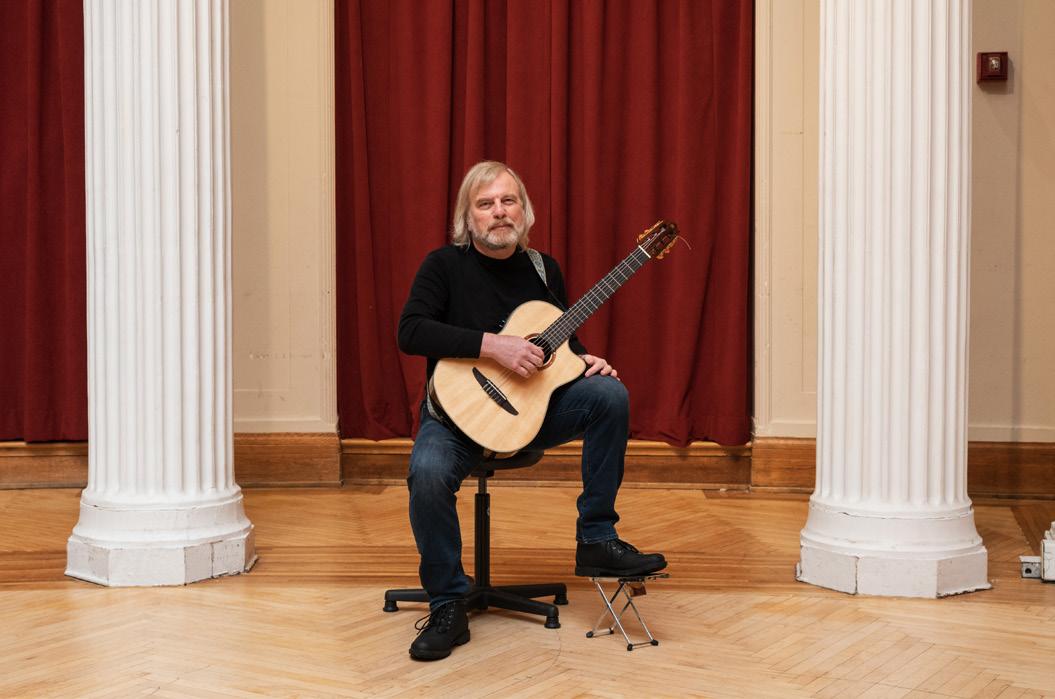
The Harmony of Science, Technology, Engineering, and Math
Marc De Graef is a materials science and engineering professor and the faculty director of CMU’s Materials Characterization Facility, a world-class facility for structural and chemical characterization. The materials characterization software he developed to overcome shortcomings with the third-party software he had used for decades is now used by scientists worldwide.
When De Graef, who is also an accomplished guitarist, read a paper in American Scientist about modeling used in music harmonies and chords, he set to reworking the plots. His improvements sparked a collaboration with the author and led to other explorations of how his research could be applied to his passion for music.
25
FORGING THE FUTURE OF MANUFACTURING AT MILL 19
Once the location of the Pittsburgh region’s most productive steel mills, today Mill 19 is home to the Manufacturing Futures Institute and the discovery workspace where Carnegie Mellon innovators partner with industry pioneers to apply their world-class expertise in digital innovation, advanced manufacturing technology, and human intelligence to the production of the future.
The underlying steel superstructure of the former mill is now the foundation of an enormous solar shed. Nearly 5,000 solar PV panels are installed on its roof, making it the largest single sloped solar structure in the U.S.
26
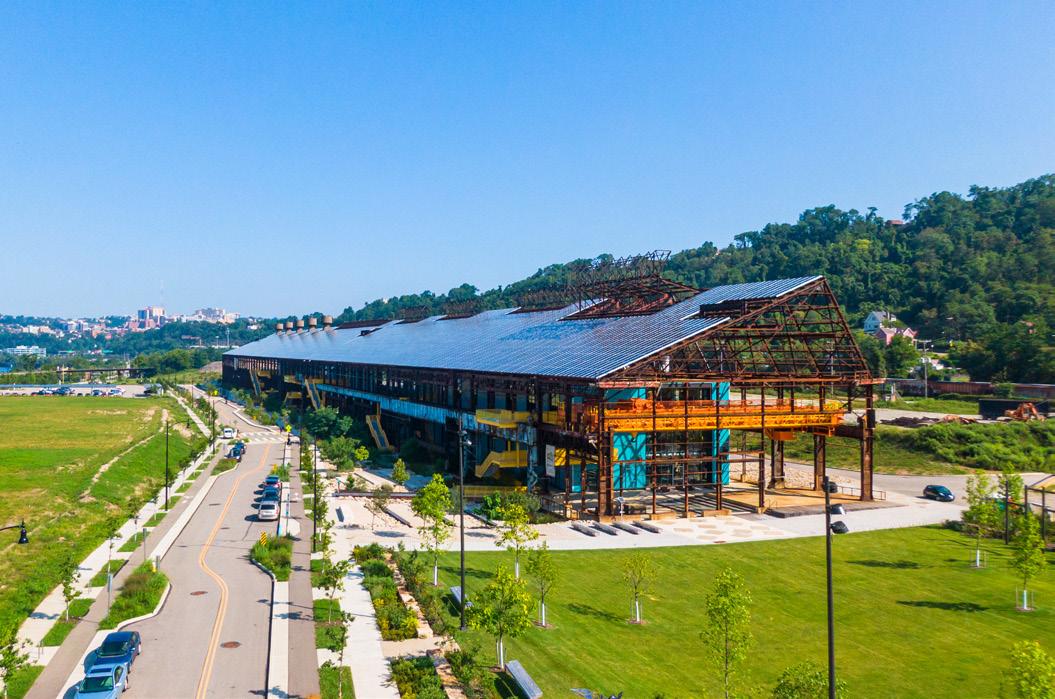

May Your Boulders Be Your Blessings
Aron Lee Ralston (BS MECH E ’97) famously survived a canyoneering accident by cutting off part of his right arm. He freed himself by breaking his arm bone with the boulder that had entrapped him. Since then, he has become a popular motivational speaker who encourages others to turn their boulders into blessings.
When he gave the keynote speech at CMU’s 2011 commencement, he told the graduates he turned to the analytical problem-solving skills he had forged at CMU to define the problem, gather information, and brainstorm and prioritize the solutions that led to his remarkable rescue.
29
A WINNING INVENTOR
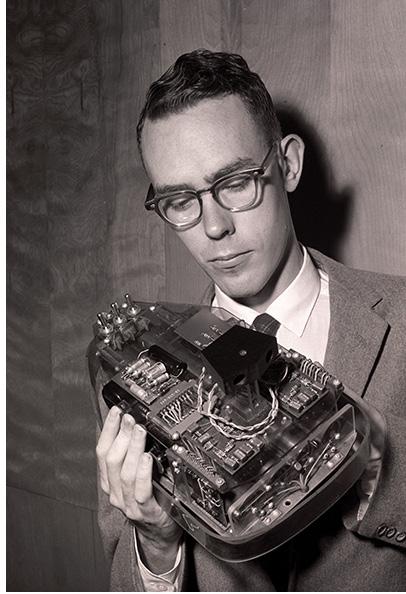
30
Ivan Sutherland (Carnegie Mellon University Archives)
Ivan Sutherland (BS ECE ’59) invented Sketchpad—the precursor to today’s computeraided design (CAD) programs. He received the prestigious Turing Award and the Kyoto Prize for his pioneering achievements in the development of computer graphics.
But his inventions took physical form too. While a student at CMU in the 1950s he built Machina Versatilis, a robot shown here that chased lights, squealed when it bumped something, and attempted to avoid obstacles. He returned to CMU in the early ‘80s and built an eight-foot-long, six-legged walking machine considered to be the first computer-controlled walking robot capable of carrying a human.
31 INVENTOR

CYBERSECURITY EXCELLENCE

The internet connects us around the globe faster than ever before, bringing opportunities while also exposing sensitive information to cyber threats and attacks. College of Engineering faculty teach a range of topics in cybersecurity and privacy, and CMU’s Information Networking Institute educates and develops engineers through technical, interdisciplinary master’s degree programs in information networking, security, and mobile and IoT engineering. CyLab, the university’s security and privacy research institute, brings together CMU experts in engineering, computer science, public policy, information systems, business, humanities, and social sciences.
CMU has earned the top spot in U.S. News and World Report’s Undergraduate Cybersecurity Program rankings for three consecutive years. Through its outstanding educational programs and research efforts, CMU has been designated as a National Center of Academic Excellence in Cyber Defense, Operations, and Research.
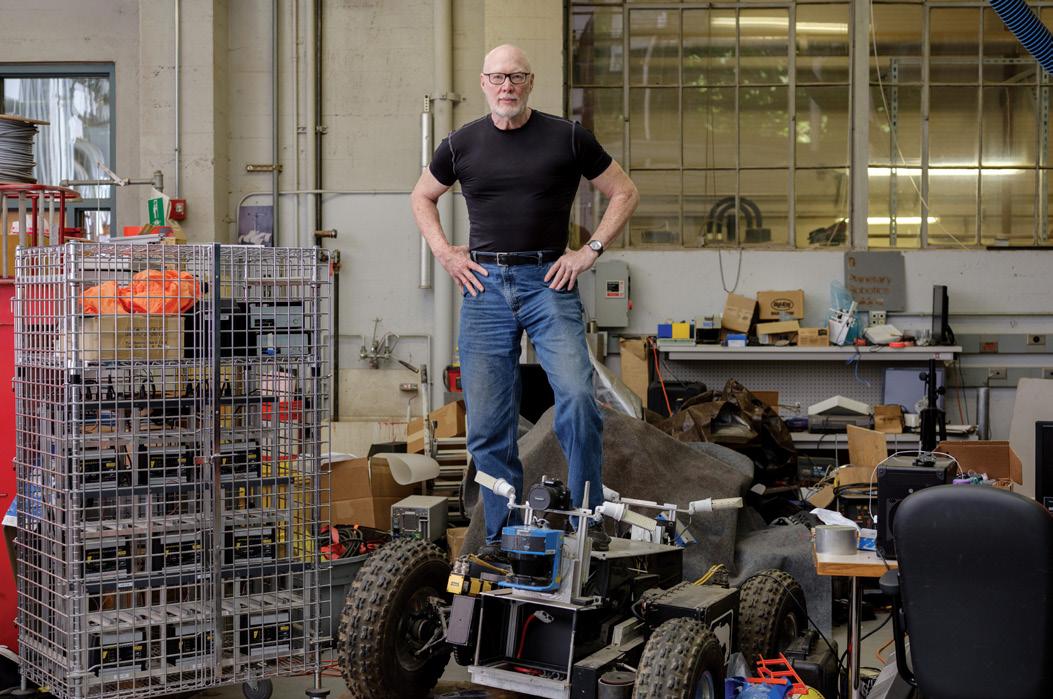
Robots Take the Field
William “Red” Whittaker (MS CEE ’75, PhD CE ’79) is a pioneer in robotics and the founder of field robotics—the technologies that allow autonomous systems to perform repetitive, difficult, or dangerous tasks. As an assistant professor in civil engineering, he and his students built the first robot to go inside the damaged Three Mile Island nuclear power plant. He has also designed systems for autonomous vehicles and space exploration.
Whittaker led the Tartan Racing team that won the lucrative and prestigious DARPA Urban Grand Challenge in 2007.
35
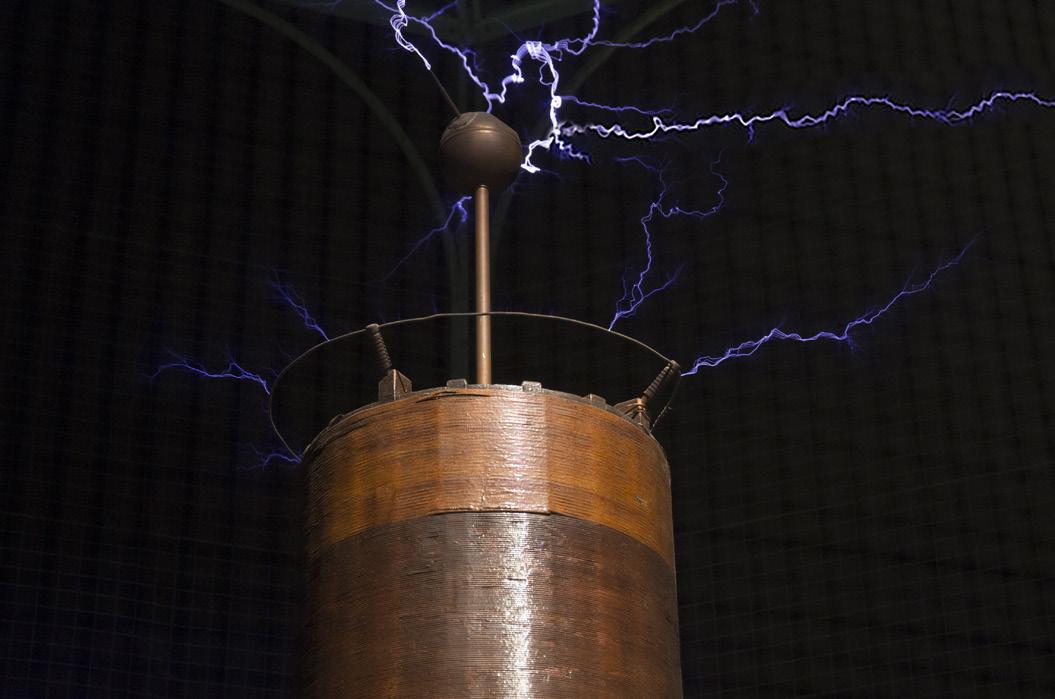
On display at the Carnegie Science Center in Pittsburgh is the Tesla coil that George Kaufman (ENG 1917) built as a teenager in 1911. The replica of Nikola Tesla’s invention that can boost a 120-volt alternating current to millions of volts of electricity was powerful enough to cause power-grid failures in Kaufman’s childhood neighborhood of Ben Avon, Pennsylvania.
The Tesla coil was used by CMU for on-campus demonstrations for 30 years, and Kaufman went on to become chief electrical engineer for J&L Steel, where he earned more than 100 patents.

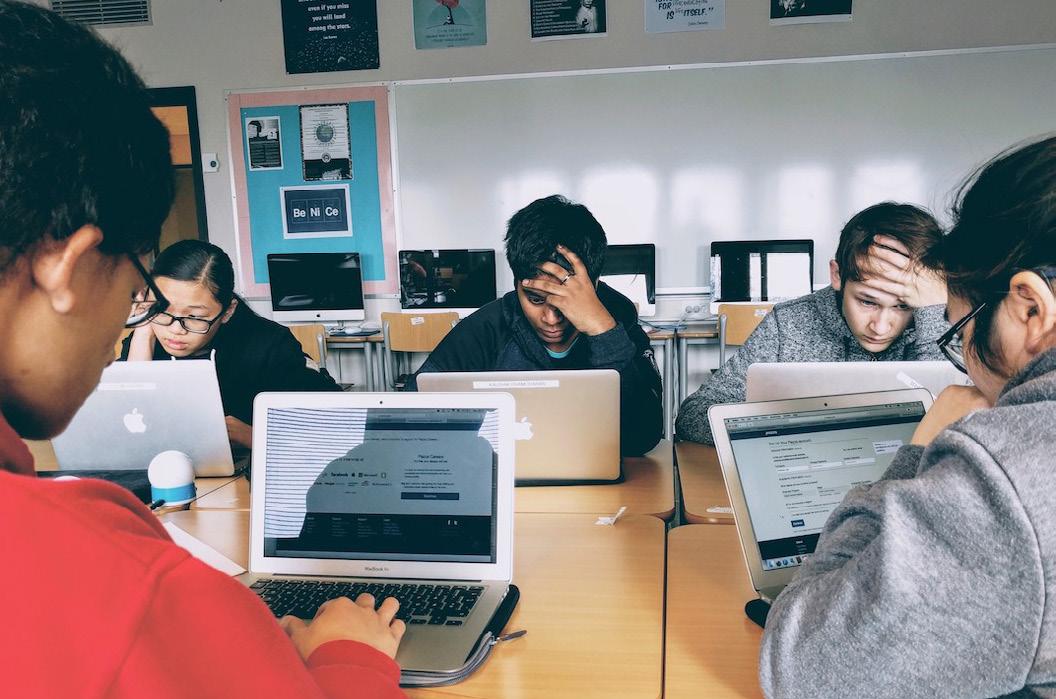

HACKER BOOT CAMP
Since 2013, hundreds of thousands of people worldwide have hacked their way through picoCTF—the world’s largest online hacking competition hosted by CyLab, CMU’s security and privacy institute. Middle and high school teachers who have adapted picoCTF into their curriculum have helped to attract more young people to cybersecurity and build a much-needed pipeline of talent to the cybersecurity workforce. The event has grown to include several geographically based leaderboards and programming in Canada, Japan, and Africa.
Many of the 68 challenges were written by members of Carnegie Mellon’s internationally acclaimed competitive hacking team, the Plaid Parliament of Pwning. The team has won the so-called “Olympics of Hacking,” DefCon’s Capture the Flag competition, six times in the past 10 years.
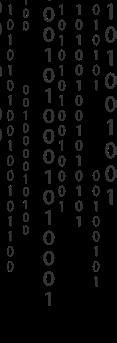
39
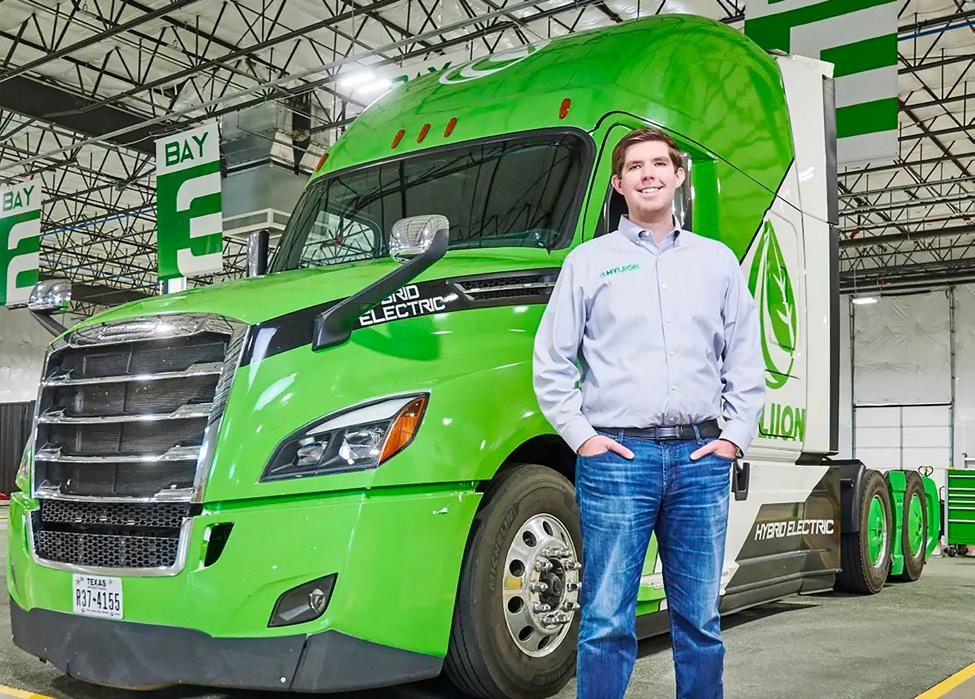
40
Reserve, Reuse, Reduce
Thomas Healy (BS EPP, MECH E ’14), is a motorsports racer, a Forbes 30 Under 30 winner, and founder and CEO of Hyliion. The company’s electric powertrain semitrucks use renewable natural gas produced from biowaste to fuel onboard generators. Energy from the fuel is converted into electricity that is stored in batteries, which power the truck’s motor while driving. The company’s hybrid powertrain semi-trucks employ a regenerative braking system, storing energy lost while braking and coasting down hills to power the truck’s acceleration.
Healy says his vision for a global net-carbon-negative commercial transportation industry is ambitious, real, and achievable through his company’s technology that can reduce pollution and reliance on carbon-intensive fuels, and make shipping goods cheaper on a global scale.
41
A Monumental Birthday Gift
In 2015, on the same day that the 3,600 bronze-colored panels began arriving in Washington, D.C. for the three-tiered exterior of the new Smithsonian National Museum of African American History & Culture, a young project manager celebrated her 25th birthday.
Brittani Grant (BS CEE ‘12, MS CEE ‘12), who had spent nearly three years working on the team responsible for the selection and quality control of the panels, began work on the monumental project while interning with the Clark Construction Group.
42
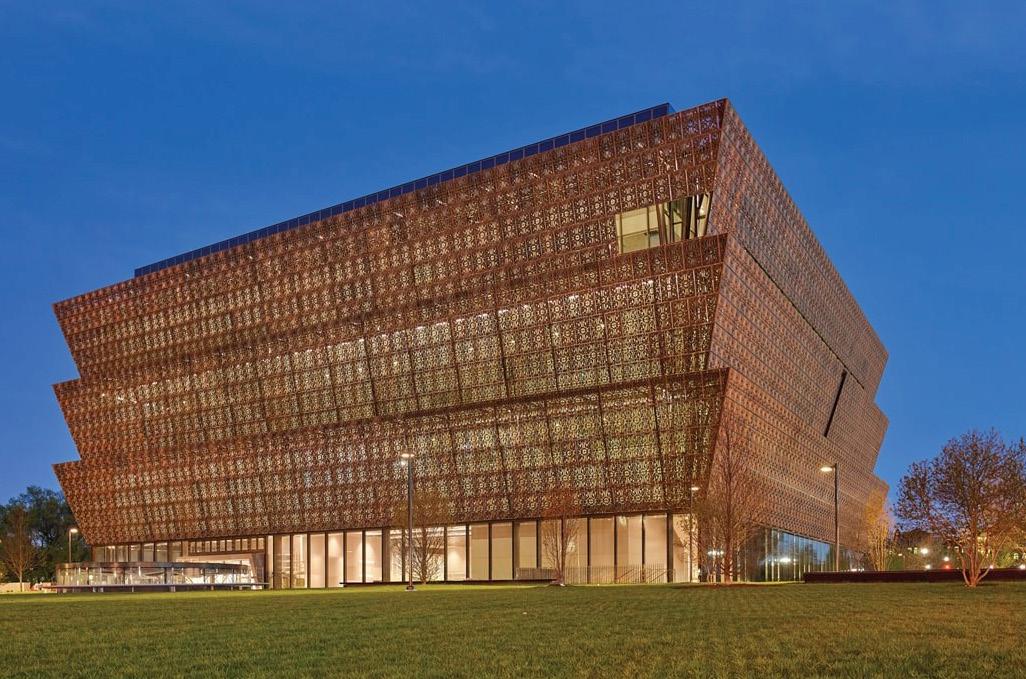

Tops in Technology Transfer
Carnegie Mellon University was ranked as the top university in the United States for technology transfer in a 2022 report from Heartland Forward, a nonprofit “think and do tank.”
Heartland Forward evaluated which universities were most proficient at creating new knowledge; embedding it in their science, technology, engineering, and mathematics (STEM) graduates; and transferring both to new and existing enterprises. The findings were based on an index that combined 14 metrics for the time period of 2017-2019, an array the report claims as “among the most comprehensive ever compiled.”
45

new business BRILLIANCE
Hooman Radfar (E 2004) has a knack for turning an idea into a profitable business. The serial entrepreneur and investor conducted research in web services and social networking that became the basis of his first business venture. Together with fellow CMU student Austin Fath (E 2004), Radfar co-founded Clearspring Technologies while the two were students at Carnegie Mellon’s Information Networking Institute, which offers engineering students technical, interdisciplinary master’s degree programs in information networking, security, and mobile and IoT engineering that incorporate business and policy perspectives.
Clearspring evolved into the startup AddThis, a marketing automation platform for online publishers and advertisers. AddThis was acquired by Oracle for $200 million in 2016 when the platform’s network had grown to more than 15 million. Today, Radfar is a partner with Expa, a startup studio that develops and launches new companies. He also continues to invest in startups and is the founder of investment platform 10e9, and Collective, an online, back-office platform designed for businesses-of-one.
47
BRINGING SOCIAL SCIENCE TO ENGINEERING TECHNOLOGY

Against the backdrop of the civil rights movement, the Vietnam war, and growing concerns about industrial pollution, a small group of mostly junior engineering faculty at CMU pursued a program to train scientists and engineers in the broader societal impacts of technology.
They respectfully ignored the advice of more senior colleagues that such an academic endeavor was too risky, and in 1971, the program in Engineering and Public Affairs was established. The department that is now Engineering and Public Policy was the first of its kind and is still a unique offering that prepares engineers to work at the interface between the social and engineering sciences.


A Nobel Peace Prize-Winning Engineer
Emeritus Professor Ed Rubin (third from left) was awarded a Nobel Peace Prize in 2007, when U.S. Vice President Al Gore shared the prize with the Intergovernmental Panel on Climate Change, for which Rubin was coordinating lead author of the Special Report on Carbon Dioxide Capture and Storage. The awardees were recognized for their “efforts to build up and disseminate greater knowledge about man-made climate change, and to lay the foundations for the measures that are needed to counteract such change.”
Rubin, who helped establish the Engineering and Public Policy program at CMU, is the most highly cited authority on carbon capture and storage systems and is an internationally recognized expert in energy and environmental technology innovation and climate change mitigation.
51
minicomputersMAJOR ADVANCEMENTS
The evolution of computers from large mainframes to the ubiquitous cell phones we use today included the advent of super minicomputers. And Bill Strecker (BS ECE ‘66, MS ECE ‘67, PhD ECE ‘71) advanced the era with the invention of the VAX computer architecture that was introduced by Digital Equipment Corporation in 1977.
It was the encouragement toward interdisciplinary study at CMU that inspired Strecker to look beyond the field of electronic communication systems to one in computers that led to a career during which Strecker amassed 16 patents in computer architecture and design. In 2019, he and his wife, Nancy, who served for many years as an executive at Digital Equipment Corporation, made a $15 million gift to endow the dean’s chair in the College of Engineering.
52

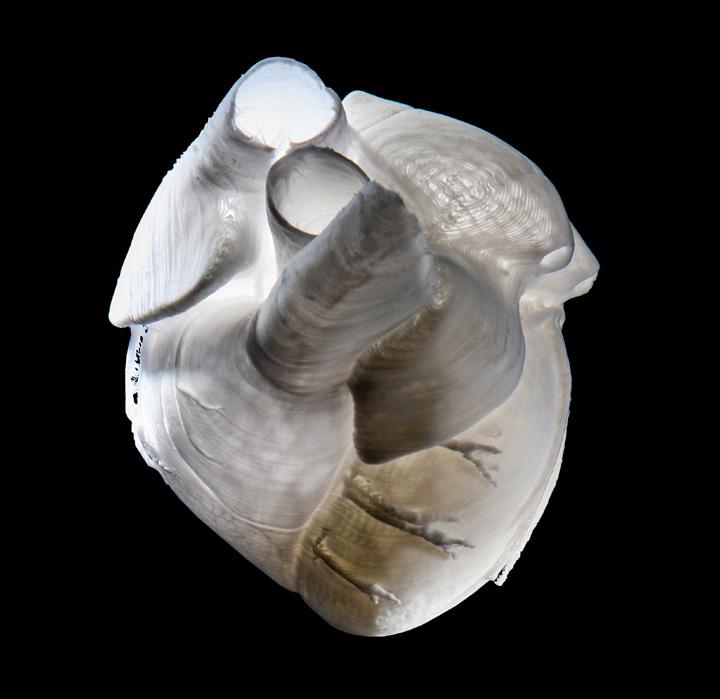
54
A FRESH APPROACH TO ENGINEERING HUMAN HEARTS
In 2019, Adam Feinberg and his research team brought the field of tissue engineering one step closer to being able to 3D print a full-sized adult human heart. The Freeform Reversible Embedding of Suspended Hydrogels (FRESH) technique they developed can 3D print tissue scaffolds out of collagen, the major structural protein in the human body. Feinberg, a professor of biomedical engineering and materials science engineering, has since advanced the technology by using the FRESH technique to create the first full-size 3D bio-printed human heart model from MRI data using a specially built 3D printer. The model realistically mimics the elasticity of cardiac tissue, allows for visual planning, and provides surgeons a new tool for physical practice.
55
FIRST SIGNAL FROM THE MOON

Arthur Ruge (BS CEE 1925) invented the strain gauge, a fingernail-sized device that revolutionized the way things are weighed and tested for stress. Ruge, who understood the value of the deceptively simple device, went on to commercialize it for use in a wide range of civil, mechanical, and aeronautical engineering applications.
His New York Times obituary in 2000, noted that Ruge’s invention helped the U.S. win World War II, and the first signal received from the moon was a reading from a strain gauge on the leg of the Surveyor I lunar lander in 1969. The Arthur C. Ruge Atrium in Scott Hall was named by his daughter, Claire Ruge Bertucci, who along with her husband, John, funded the Bertucci

Nanotechnology Lab.

57
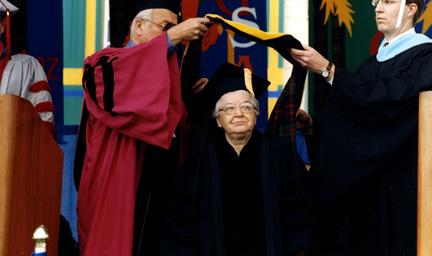

58
Stephanie Kwolek received an honorary degree in 2001
BULLETPROOF BULLETPROOF
Stephanie Kwolek (MM ’46, H ’01), who studied chemical engineering at Margaret Morrison College, discovered Kevlar, a material used in police and military body armor, as well as countless other applications that call for very strong, lightweight material.
Kwolek went to work as a chemist for DuPont, and in 1965 the company challenged its scientists to create a lightweight yet strong fiber to replace the steel used in tires. She had to persuade a male colleague to run the thin, cloudy liquid she had discovered through a spinneret, and it surprisingly produced the astonishingly strong new fiber used to make Kevlar. In 2020, Time recognized her as one of the 100 Women of the Year.
59

60
AN INVENTOR WHO TRANSFORMED LIFE ON EARTH
Giorgio Coraluppi (MS ECE ’66) invented the groundbreaking digital technology that allows thousands of callers to join in one telephone call. In 1987, his Compunetics Switching Network invention beat out AT&T for a multimillion-dollar contract to supply NASA with conferencing technology for the Goddard Space Flight Center. By 1992, Coraluppi’s company, Compunetix, had replaced all of NASCOM’s technology. And today, tech companies around the world have reproduced the patented technology for commercial purposes, which we now use on platforms including Zoom, Microsoft Teams, and FaceTime.
In 2020, Coraluppi, was inducted into the Space Technology Hall of Fame, an honor designated for inventors whose creations originally designed for use in space have transformed life on earth.
61

Keeping It Fresh
James Rogers (BS BME & MSE ‘07) is the founder of Apeel Sciences, a company that uses plant-based materials to create a protective extra peel that seals moisture in, keeps oxygen out, and keeps produce fresh twice as long.

When Apeel was named a World Economic Forum Technology Pioneer in 2018, Rogers was recognized as an entrepreneur who contributes diverse solutions to the world’s most pressing challenges. And his company joined past Technology Pioneers awardees that include Google, Airbnb, Kickstarter, and Wikimedia.

63
GO WEST YOUNG INNOVATORS
Since establishing its campus in Silicon Valley in 2002, Carnegie Mellon has become entrenched in the storied epicenter of technology innovation. Students in the Electrical and Computer Engineering, Integrated Innovation Institute, and Information Networking Institute programs enjoy exceptional opportunities created by their proximity to the world’s leading high-tech companies.
Carnegie Mellon Silicon Valley graduates are shaping the future of science, technology, and business in leadership positions with top companies and as the founders of exciting startups. Carnegie Mellon’s West Coast outpost is a place where innovators are meeting the ever-changing technological challenges of society.
64
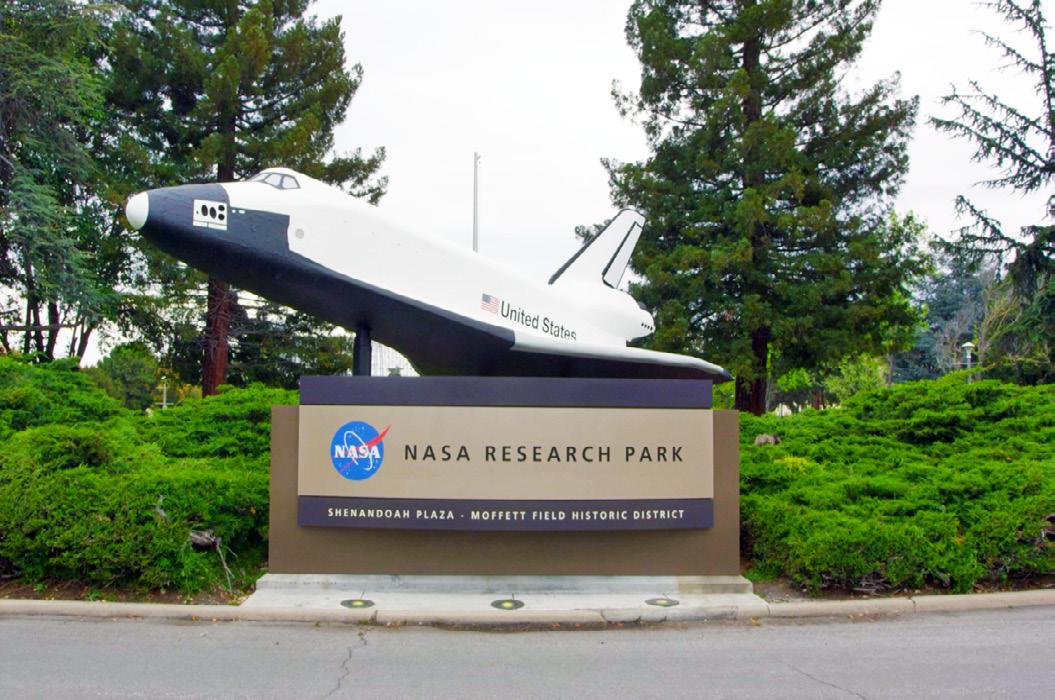

How Do You Like Them Apples?
Roger Rosner (BS ECE ’87) founded Blue Fish Labs, which was acquired by Apple Computer, where he became an engineering manager. He also directed Apple’s iWork software suite before taking on his current position as VP of applications.
Alex Acero (PhD ECE ’90) applies his career-long experience in speech technology, as the Senior Director at Apple leading speech recognition, speech synthesis, language understanding, and dialog for Siri, Apple’s personal assistant for iPhone, iPad, Apple Watch, Apple TV, Carplay, Macintosh, and HomePod.
Matt Rogers (BS ECE ‘04, MS ECE ‘05) served as Senior Manager, iPod and iPhone Software before founding Nest, the company that built the first learning thermostat. Today Rogers is dedicated to supporting and building high-growth technology companies.
67
Industrialist, Philanthropist, Eponymist
Raymond John Wean (Industries ’17, ENG H ’71) whose family foundation provided generous support for Carnegie Mellon, was honored with the naming of Wean Hall. He modernized American steelmaking, developed new coil steel processing methods, and founded Wean United, a manufacturer of steelmaking equipment in Youngstown, Ohio.
In 1914, the young man who would eventually serve as university trustee and receive the alumni distinguished achievement award successfully convinced Carnegie Tech’s dean that his night studies and experience as an apprentice patternmaker would serve as an equivalent for the high school diploma he did not possess. He received a full scholarship after his first year of study and upon the recommendation of then President Arthur Hamerschlag was granted permission to graduate early.
68
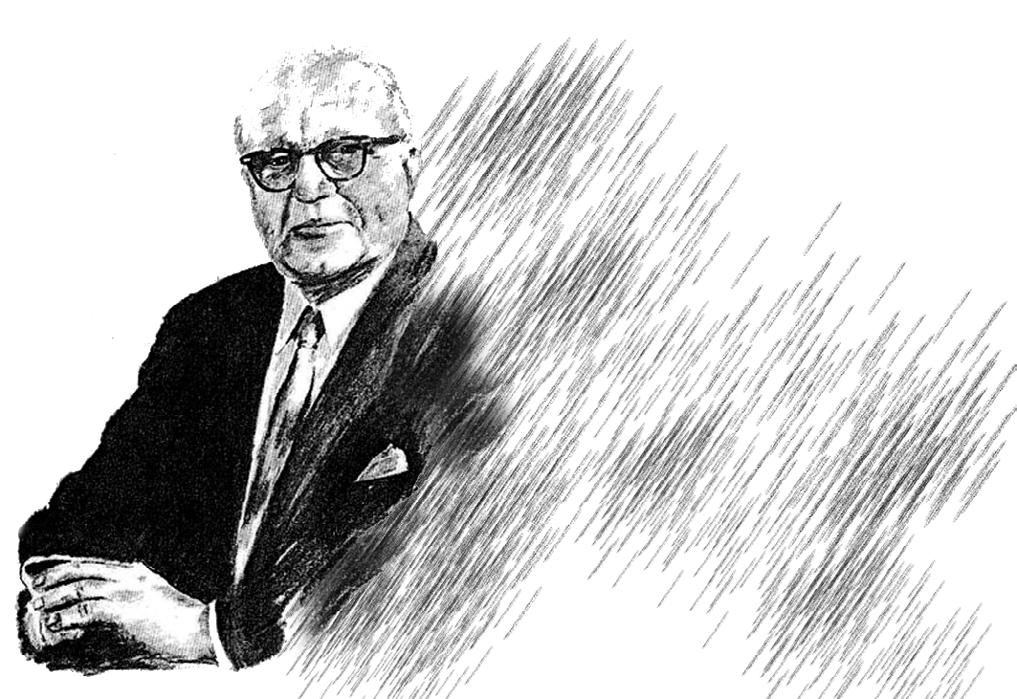

MAYHEM MAKES HISTORY
When DARPA (Defense Advanced Research Projects Agency) launched the Cyber Grand Challenge in 2014, David Brumley (PhD CS ’08), a professor of electrical and computer engineering; Thanassis Avgerinos (MS ECE ’13, PhD ’14); and Alex Robert (MS ECE ’15) were ready to battle test the Mayhem Cyber Reasoning System (CRS), an autonomous debugging computer system developed by their company ForAllSecure.
Mayhem won the $2 million first-place prize, beating out a field of more than 100 elite teams. The Mayhem CRS is now on display at the Smithsonian’s National Museum of American History in Washington, D.C., as a standalone exhibit titled “Innovations in Defense: Artificial Intelligence and the Challenge of Cybersecurity.”
71

Energy Innovators, Educators, and Conservators
Since its founding, Carnegie Mellon has been focused on energy technology, policy, and environmental impact. In 2012, CMU alumni Sherman and Joyce Scott made a gift to form the Wilton E. Scott Institute for Energy Innovation, which is housed within the College of Engineering.
Today, the Scott Institute supports more than 160 faculty affiliates from across campus whose collaborative research, strategic partnerships, policy outreach, entrepreneurial endeavors, and educational programs aim to optimize resources and reduce environmental consequences associated with energy production and use; provide more equitable access to energy resources; and develop the breakthrough technologies that will accelerate the transition to a sustainable, low-carbon energy future.
73
engineering.cmu.edu
Published May 2023
76 5000 Forbes Avenue | Pittsburgh, PA 15213 engineering.cmu.edu














































